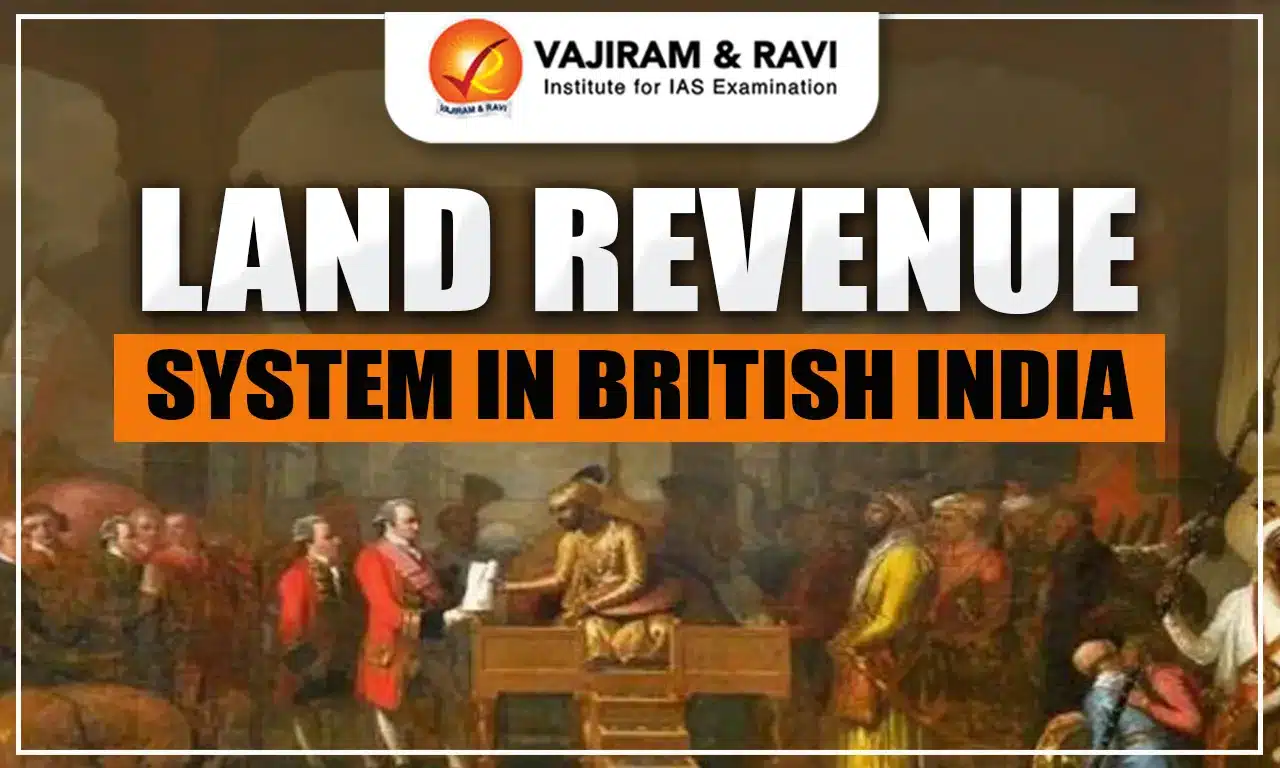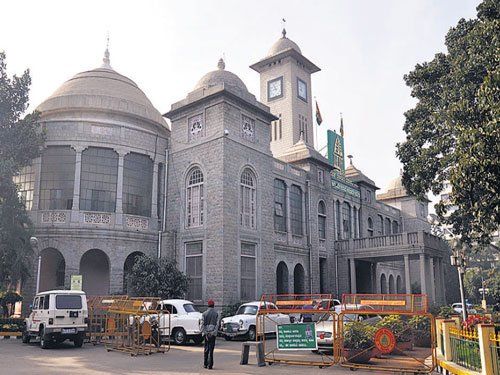Land Revenue System: On the eve of the British conquest of Bengal, agriculture was the primary source of income. Due to their mercantilist intentions, the British sought complete control over this sector, its production methods, and the individuals engaged in it, including the traditional zamindars and cultivators. Because land was one of the most important factors in agricultural productivity, Permanent Settlement was implemented initially, followed by two other land revenue systems. These policies altered the structure of Indian agriculture, resulting in agrarian stagnation, the growth of absentee landlordism, and peasant misery.
The Indian peasants had to bear the primary burden of funding the Company's trade and profits, the cost of administration, and the wars of British colonial expansion in India and abroad. In fact, if they hadn't levied her a hefty tax, the British would not have been able to conquer such a sizable nation as India.
Land Revenue Policy of British in India
The land revenue policy in India was mainly fixed by the Mughal Empire, but the British felt the urgent need for new policies in their favour. As a result, they introduced three land revenue policies - Permanent Settlement, Ryotwari Settlement and Mahalwari System.
Permanent Settlement (1793)
The Permanent Settlement aimed to establish a permanent amount for the land revenue. It was introduced in Bengal and Bihar in 1793 by Lord Cornwallis and was planned by John Shore. It was later extended to Orissa, the Northern Districts of Madras, and the District of Varanasi.
Features:
- The zamindars, who were earlier only tax collectors without any proprietary rights prior to 1793, were now made the owners of the land.
- The ownership was hereditary until they paid the tax on time, and in case of failure, the lands were auctioned. Thus, the ownership was made transferable.
- The state was to receive 10/11th of the rent the zamindars received from the peasantry, with only 1/11th going to the zamindars themselves. However, the amounts they would be required to pay as land revenue were made permanent.
- Any increase in the rent was to be kept by the zamindars themselves. The state would not put them under any more demands.
- In order to secure the maximum amount, the initial revenue fixation was made arbitrarily and without consulting the zamindars.
Need for the Settlement:
- To forge political allies: The British understood that they needed local allies who would serve as a barrier between them and the local populace.
- For financial stability: Prior to 1793, the Company had difficulty adapting to changes in its primary source of income, land revenue, so they needed a concrete policy that would provide them with stable income.
- To raise agricultural productivity: There was a belief that the Permanent Settlement would increase agricultural production. The zamindar would be highly inspired to boost cultivation and raise agricultural productivity.
Impact of the Permanent Settlement:
- Impacts on zamindars:
- Even if the crop failed for some reason, the zamindar was still required to pay his revenue on time, or else his lands would be sold.
- Almost half of the lands under this settlement were sold between 1794-1807 due to very high and uncertain land revenue.
- The Policy gave rise to a new class of landlords in place of traditional zamindars.
- Impacts on peasants:
- The actual cultivators of the Land were reduced to the mere tenants of zamindars.
- High rates of tax compelled zamindars to oppress the peasants in order to meet the demands of the state, such as seizing the tenants' property, beating, locking, etc.
- Rise of absentee landlordism: The Policy created a large number of absentee landlords (subinfeudation) who were collecting the revenue on behalf of the actual landlords.
- Impact on the agriculture sector: The rise of intermediaries (absentee landlordism), distress of peasants, and detachment of zamindars from the land caused the stagnation of agriculture and made land a commodity.
Ryotwari Settlement (1820)
It was introduced by Alexander Reed and Thomas Munro in parts of the Madras and Bombay Presidencies.
Features:
- The Ryotwari settlement was not permanent.
- After 20 to 30 years, when the revenue demand typically increased, it was periodically revised.
- The land revenue was collected from each ryot individually. Thus, unlike the Permanent Settlement, the Ryotwari Settlement recognised peasants as the owners of the land.
- There was no peasant ownership system prior to the Ryotwari Settlement.
Impacts:
- The land revenue fixed in most areas was so high that the ryots were rarely left, even with basic maintenance. They were impoverished and lacked the resources to cultivate their land.
- Even when agricultural produce was completely or partially destroyed by drought or flooding, the ryots were still required to pay revenue.
- The peasants were oppressed by intermediaries and moneylenders, from whom they were compelled to take loans to meet the taxation demands of the state.
- The infamous Deccan Riot of 1875was due to the oppression of ryots by the moneylenders.
- The majority of the land in Madras, as well as the Bombay Presidency, was left uncultivated due to high taxes and no buyers.
Mahalwari System (1822)
It was a modified version of the Zamindari settlement, introduced in the Gangetic Valley, the North-West Provinces, some parts of Central India, and the Punjab. The revenue policy was conceptualised by Holt Mackenzie in 1819 and introduced by the British in 1822.
Features:
- This land revenue settlement was to be made village by village or estate (mahal) by the estate with landlords or heads of families who collectively claimed to be the landlords of the village or the estate.
- The settlement under the Mahalwari system was not made permanent. It was revised periodically after 20 to 30 years when the revenue demand was usually raised.
Impacts:
- The British made direct settlements with the village zamindars; thus, the control and status of the erstwhile big taluqdars were undermined.
- The taxes were so high that the proprietorship of land used to pass into the hands of merchants and moneylenders from the village zamindars.
- Thus, the Mahalwari system brought impoverishment to the cultivators of North India, and their resentment was reflected in the popular revolt of 1857.
- The villagers (peasants), taluqdars, and even new zamindars drove off British officials and destroyed their courts and official records.
Implications of Land Revenue Policy of British
With such hefty taxes levied under the three land revenue policies, there were certain implications, such as:
- Absentee landlordism: The Company's land revenue systems were exploitative in nature. It created landlordism in some parts and peasant proprietorship in some other regions.
- In Bengal, it led to the emergence of absentee landlordism.
- Commercialisation of agriculture: Since the rate of revenue under the Company's land revenue system was excessive, the peasants started producing all those crops with high market value. It is known as the commercialisation of agriculture.
- It led to the change from home consumption to market consumption.
- Therefore, cash crops like cotton, sugarcane, jute, etc. began to be cultivated.
- Social impact: Land revenue policies had progressive significance over a period of time. It led to the disappearance of old rigidities like caste in village life and led to the emergence of class consciousness.
- Peasant movement: The anger of peasants and traditional zamindars culminated in a number of minor and major revolts.
- Famines: The periodic recurrence of famines and the economic depression in the nineteenth century aggravated the situation in rural areas, resulting in many peasant uprisings.
- Rights of cultivators: The cultivators lost their long-standing claims to the soil and other customary rights, and they were reduced to the low status of mere tenants.
- For instance, some of their rights were sacrificed, including the use of pasture and forest lands, irrigation canals, fisheries, homestead plots, and protection from increases in rent.
- In areas where they were made owners, their conditions are even worse.
- Dеbt traps and stagnant productivity: High rеvеnuе demand and the lack of investment in land lеd to peasants falling into dеbt traps and hindеring agricultural productivity.
The drive to collect large revenue was central to British Policy. Sometimes, this led to the development of a land market - the sale and purchase of land. But at other times, the State's demands were so heavy that no purchasers were to be found. The need to collect so much was itself made necessary by the heavy expenditures of the Government in India and its need to send a lot of money to Britain for its expenses there.
| Other Related Posts | |
| British Policies in India from 1765 to 1857 | Economic Policies of British in India |
| Drain of Wealth Theory | Land Revenue System in British India |
Last updated on December, 2025
→ Check out the latest UPSC Syllabus 2026 here.
→ Join Vajiram & Ravi’s Interview Guidance Programme for expert help to crack your final UPSC stage.
→ UPSC Mains Result 2025 is now out.
→ UPSC Notification 2026 is scheduled to be released on January 14, 2026.
→ UPSC Calendar 2026 is released on 15th May, 2025.
→ The UPSC Vacancy 2025 were released 1129, out of which 979 were for UPSC CSE and remaining 150 are for UPSC IFoS.
→ UPSC Prelims 2026 will be conducted on 24th May, 2026 & UPSC Mains 2026 will be conducted on 21st August 2026.
→ The UPSC Selection Process is of 3 stages-Prelims, Mains and Interview.
→ UPSC Result 2024 is released with latest UPSC Marksheet 2024. Check Now!
→ UPSC Prelims Result 2025 is out now for the CSE held on 25 May 2025.
→ UPSC Toppers List 2024 is released now. Shakti Dubey is UPSC AIR 1 2024 Topper.
→ UPSC Prelims Question Paper 2025 and Unofficial Prelims Answer Key 2025 are available now.
→ UPSC Mains Question Paper 2025 is out for Essay, GS 1, 2, 3 & GS 4.
→ UPSC Mains Indian Language Question Paper 2025 is now out.
→ UPSC Mains Optional Question Paper 2025 is now out.
→ Also check Best IAS Coaching in Delhi
British Land Revenue System FAQs
Q1. What is meant by land revenue?+
Q2. Why did the British implement a land tax system in India?+
Q3. What were the Impacts of Britain sending zamindars to collect taxes?+
Q4. Who suggested the new land revenue system after the Permanent revenue system?+
Q5. Why were the peasants unhappy with the British land revenue policies?Why were the peasants unhappy with the British land revenue policies?+

















